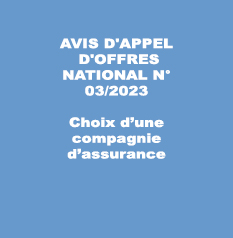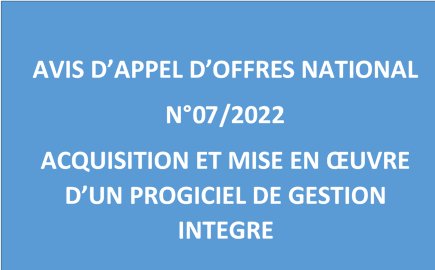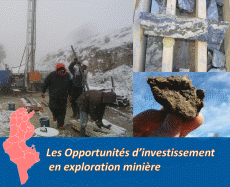| Programme annuel & rapport de suivi technique |
-

Rapport d'activités 2023
-

Programmes Techniques 2024
|
| Géocatalogue |

|
| Appels d'Offres |
-

ACQUISITION DES TICKETS RESTAURANT POUR LE PERSONNEL DE L’ONM
-

CHOIX D’UNE COMPAGNIE D’ASSURANCE
-

ACQUISITION ET MISE EN ŒUVRE D’UN PROGICIEL DE GESTION INTEGRE
|
|
Investir en Tunisie |


|
|
|
|
|
::
Documentation and Editions
>>
Research library
|
| |
|
[
Search by author
]
[
Search keyword
]
[
Search by index
]
[
Search by category
]
|
title of the reference :
|
Neogene deformation in northern Tunisia
|
|
Publication Date:
|
1980
|
|
Author :
|
Cohen Curtis R., Schamel Steven, Boyd-Kaygi Patti
|
|
Catalogue type :
|
Livre
|
|
Catalogue reference :
|
Vol. 91 (USA) Geol. Soc. Am. Bull. Vol. 91 Neogene deformation in northern Tunisia Déformation néogène dans le nord de la Tunisie : Origine de l'Atlas Est par collision d'un microplate et d'une marge continentale. Origin of the eastern atlas by microplate-continental margin collision. Detailed structural analysis in the southern Hédil region, northern Tunisia, suggests that the area is characterized by normal faulted, southeast-vergent and upright, box to close-style folds. Fold nappes and imbricate thrust sheets postulated previously are absent in the Hédil, although thrust sheets do occur farther north in the Mogods and Kroumerie regions. A two-stage tectonic model is proposed : (1)middle Miocene progressive deformation involving initial buckle folding and later shear faulting in the Hédil, and southeast-directed thrusting in the Mogods and Kroumerie: and (2)postdeformation extensional faulting parallel to regional fold trends, bimodel (basalt-rhyolite)volcanism, and molasse deposition. Minor, post-Messinian southeast-vergent thrust faulting followed this extensional regime and continues to the present. Maximum principal compressive stress (?1), horizontal and striking S38°E, is inferred for the middle Miocene. The middle Miocene fold and thrust structures are related to the collision of the counterclockwise-rotating Corsica-Sardinia-Petit Kabylie plate with the Tunisian continental margin. Following this collision, in the Tortonian, the development of a sphenochasm spreading system to the west of the present-day Straits of Sardinia produced the extensional regime that prevailed in northern Tunisia. As spreading continued, the Petit Kabylie rotated clockwise away from Sardinia. Movement ceased when the Petit Kabylie collided with the Algerian continental margin.
bibliogr. microtectonique ; axe pli ; Néogène ; convergence plaque ; microplaque ; rotation continentale ; molasse ; Tunisie ; Tunisie Nord Schamel Steven Boyd-Kaygi Patti Cohen Curtis R. Tectonique
|
|
Indexation decimale :
|
Tectonique
|
|
Keywords :
|
microtectonique ; axe pli ; Néogène ; convergence plaque ; microplaque ; rotation continentale ; molasse ; Tunisie ; Tunisie Nord
|
|
Summary :
|
Detailed structural analysis in the southern Hédil region, northern Tunisia, suggests that the area is characterized by normal faulted, southeast-vergent and upright, box to close-style folds. Fold nappes and imbricate thrust sheets postulated previously are absent in the Hédil, although thrust sheets do occur farther north in the Mogods and Kroumerie regions. A two-stage tectonic model is proposed : (1)middle Miocene progressive deformation involving initial buckle folding and later shear faulting in the Hédil, and southeast-directed thrusting in the Mogods and Kroumerie: and (2)postdeformation extensional faulting parallel to regional fold trends, bimodel (basalt-rhyolite)volcanism, and molasse deposition. Minor, post-Messinian southeast-vergent thrust faulting followed this extensional regime and continues to the present. Maximum principal compressive stress (?1), horizontal and striking S38°E, is inferred for the middle Miocene. The middle Miocene fold and thrust structures are related to the collision of the counterclockwise-rotating Corsica-Sardinia-Petit Kabylie plate with the Tunisian continental margin. Following this collision, in the Tortonian, the development of a sphenochasm spreading system to the west of the present-day Straits of Sardinia produced the extensional regime that prevailed in northern Tunisia. As spreading continued, the Petit Kabylie rotated clockwise away from Sardinia. Movement ceased when the Petit Kabylie collided with the Algerian continental margin.
|
|
Exemplaries :
|
TU674A, TU674B
|
|
|
|
|
|
|
|



